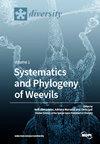eDNA Metabarcoding Analysis as Tool to Assess the Presence of Non-Indigenous Species (NIS): A Case Study in the Bilge Water
IF 2.1
3区 生物学
Q2 BIODIVERSITY CONSERVATION
引用次数: 0
Abstract
One of the most important causes of biodiversity loss are non-indigenous species (NIS), in particular invasive ones. The dispersion of NIS mainly depends on anthropogenic activities such as maritime traffic, which account for almost half of the total NIS introduction in the European seas, as reported by the European Environmental Agency. For this reason, NIS management measures are mainly focused on commercial ports (i.e., ballast water management and Marine Strategy Framework Directive monitoring), underestimating the role of marinas and tourist harbors; these host small vessels (<20 m), such as recreational, fishery, and sail ones without ballast waters, but are also responsible for NIS arrival and spread through the bilge water as well as from hull fouling. With the aim of paying attention to marinas and tourist harbors and validating an innovative molecular methodology for NIS surveillance and monitoring, in the present work, eDNA metabarcoding of cytochrome oxidase subunit I (COI) was applied to both bilge waters and adjacent ones to assess species composition and particularly NIS presence. A total of 140 OTUs/species with extra-Mediterranean distribution were found in the bilge samples; several of these are most likely ascribed to food contamination (e.g., Salmo salar). Excluding food contamination species, twelve of these found in the bilge waters were already known as NIS in the Mediterranean Sea, belonging to algae, mollusks, crustaceans, annelids, echinoderms, and fishes. Nine of these species are new to Italian waters. The results obtained in the present work support the importance of NIS monitoring in marinas and small harbors, particularly in the bilge waters, through eDNA metabarcoding, having detected several potential NIS that otherwise would not have been discovered.eDNA元条形码分析作为评估非本地物种(NIS)存在的工具:以舱底水为例
生物多样性丧失的最重要原因之一是非本地物种,特别是入侵物种。根据欧洲环境局的报告,NIS的扩散主要取决于人为活动,如海上交通,这几乎占欧洲海域NIS总引进量的一半。因此,NIS管理措施主要集中在商业港口(即压载水管理和海洋战略框架指令监测),低估了码头和旅游港口的作用;这些小型船舶(20米),如休闲、渔业和无压载水的帆船,也负责NIS到达并通过舱底水传播以及船体污垢。为了关注码头和旅游港口,验证一种创新的NIS监测和监测分子方法,在本工作中,将细胞色素氧化酶亚基I (COI)的eDNA元条形码应用于舱底水和邻近水域,以评估物种组成,特别是NIS的存在。舱底样本共发现140种外地中海分布的OTUs/种;其中一些很可能是由食品污染引起的(如Salmo salar)。除食物污染物种外,在舱底水域发现的这些物种中有12种在地中海已经被称为NIS,属于藻类、软体动物、甲壳类、环节动物、棘皮动物和鱼类。其中九种是意大利水域的新物种。本工作的结果支持了通过eDNA元条形码在码头和小港口监测NIS的重要性,特别是在舱底水域,发现了一些潜在的NIS,否则不会被发现。
本文章由计算机程序翻译,如有差异,请以英文原文为准。
求助全文
约1分钟内获得全文
求助全文
来源期刊

Diversity-Basel
Environmental Science-Ecological Modeling
CiteScore
3.40
自引率
12.50%
发文量
925
审稿时长
11 weeks
期刊介绍:
Diversity (ISSN 1424-2818) is an international and interdisciplinary journal of science concerning diversity concept and application, diversity assessment and diversity preservation. It is focused on organismic and molecular diversity. It publishes reviews, regular research papers and short notes in the regular issues. Related news and announcements are also published. Our aim is to encourage scientists to publish their experimental and theoretical results in as much detail as possible. Therefore, there is no restriction on the length of the papers. Full experimental details must be provided so that the results can be reproduced.
 求助内容:
求助内容: 应助结果提醒方式:
应助结果提醒方式:


